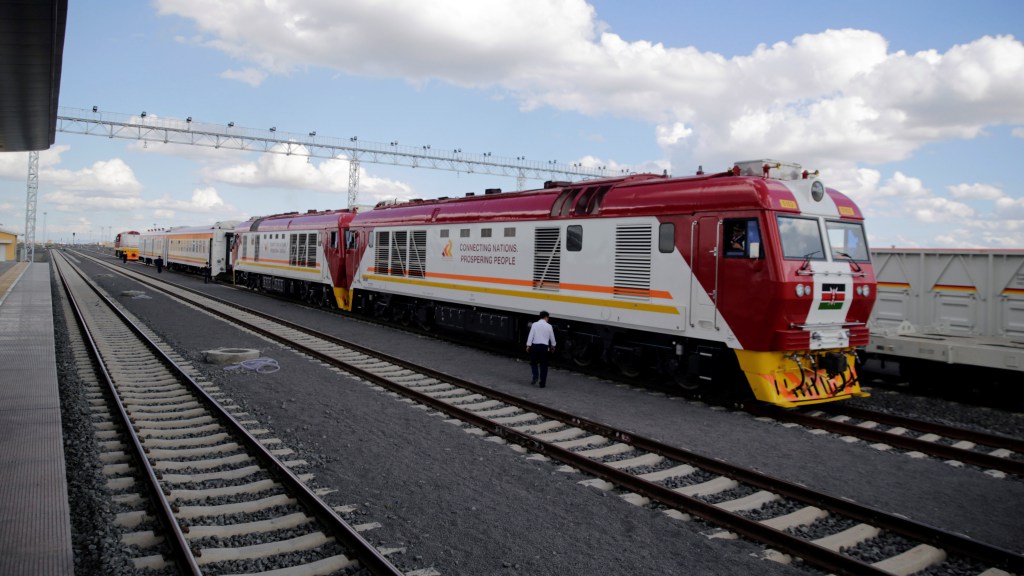CHINA’S BELT AND ROAD INITIATIVE: DEVELOPMENT PROSPECTS

06.12.2017
In 2017, the well-known initiative of Chinese President Xi Jinping “One Belt, One Road” underwent a rebranding, becoming the “Belt and Road” initiative, and attracted even more international attention. At the same time, there are even more questions about the international project. In turn, the expert of the American Brookings Institution submits the following for discussion.
Is this initiative just a way for China to export abroad its surplus labor in construction, steel and cement production, and make growing bank accounts work, or is this the first part of a grand plan to assume the role of a world power? Both, or something else?
What is the Belt and Road Initiative?
http://en.ndrc.gov.cn/newsrele…/201503/t20150330_669367.html – this is an official explanation of the National Development and Reform Commission of the People’s Republic of China, the leading agency for BRI.
And this article contains a brief summary of the initiative www.aph.gov.au/…/…/pubs/BriefingBook45p/ChinasRoad. In the article, the initiative is called “the Chinese economic and strategic agenda, within the framework of which Eurasia, as well as Africa and Oceania are more closely connected along two routes – by land and by sea”. Although the initiative officially covers broader cooperation in the development of infrastructure networks, trade, financial cooperation and cultural exchange, but still more attention is paid to infrastructure. The agreement was signed by more than 65 countries.
In this article https://qz.com/…/chinas-summit-for-its-new-silk-road-is-mi … / a map is presented showing the members of the BRI: it shows almost all the countries of Asia and Eastern and Central Europe, with the exception of Australia, Japan, New Zealand and South Korea. The participating countries are home to more than half of the world’s population and have about a third of the world’s GDP. Over the next decade, about $ 150 billion in annual investments are planned. At the Belt and Road Forum in May, China promised to allocate about $ 125 billion.
China is investing a lot of money in BRI. In 2016, China reportedly made acquisitions worth about $30 billion in the BRI countries, and this year it has already exceeded this amount. This is at a time when the government does not encourage offshore acquisitions of Chinese firms. Obviously, the regulators were told to give priority to BRI investments.
The author notes that BRI should not be confused with the Asian Infrastructure Investment Bank based in China. So, David Dollar in his material (https://www.brookings.edu/…/the-aiib-and-the-one-belt-one-…/) explains the difference. The AIIB was launched in 2016 and has 56 member countries (Australia, New Zealand and South Korea are members). The AIIB is just one of the financial institutions that finance investments that are part of the BRI.
The American Heritage Foundation in its report (http://www.heritage.org/…/chinas-huge-one-belt-one-road-ini…) advises US politicians to be on the alert. The events in Central Asia are particularly impressive: China’s trade with five Central Asian states (Kazakhstan, Kyrgyzstan, Tajikistan, Turkmenistan and Uzbekistan) is already more than twice their trade with Russia.
What does China expect to get?
The Economist (https://www.economist.com/…/e…/2017/05/economist-explains-11) tries to explain what this initiative gives to China.
“His ultimate goal is to make Eurasia (dominated by China) an economic and trade zone to compete with the transatlantic zone (dominated by America). There are many secondary motives behind this broad strategic imperative… By investing in infrastructure, Mr. Xi hopes to find a better place for China’s huge foreign exchange reserves, most of which are in low-interest American government securities. He also hopes to create new markets for Chinese companies, such as firms that produce high-speed trains, and export the country’s huge excess capacity for cement, steel and other metals. By investing in the unstable countries of Central Asia, he believes that he can create a more stable neighborhood for China’s own restive western regions – Xinjiang and Tibet. And by encouraging Chinese projects in the South China Sea, the initiative can strengthen China’s claims in this region (the “path” in the” belt and road ” means sea routes).”
In the above article, Brookings Institution analyst David Dollar explains why China considers this urgent. In the six years before the financial crisis, the Chinese economy grew by 11 percent annually, with an investment-to-GDP ratio of just over 40 percent. In the six years after the crisis, this growth rate averaged 7 percent, the share of investment in GDP was 50%. The Chinese can be justified in finding ways for more efficient growth, and the BRI should be considered as an external component of the strategy; the internal agenda is no less complex.
What should others do to make the most of the initiative?
About a year ago, the analytical group of the Economist magazine presented what can be considered a complete list of activities that could be included in the BRI – mainly with regard to infrastructure.
At the same time, the author believes that within the framework of the initiative, more attention should be paid to the social, environmental and political consequences of the BRI for countries that benefit from increased investment in infrastructure and increased road, rail and sea transport.
Number of shows: 1360
